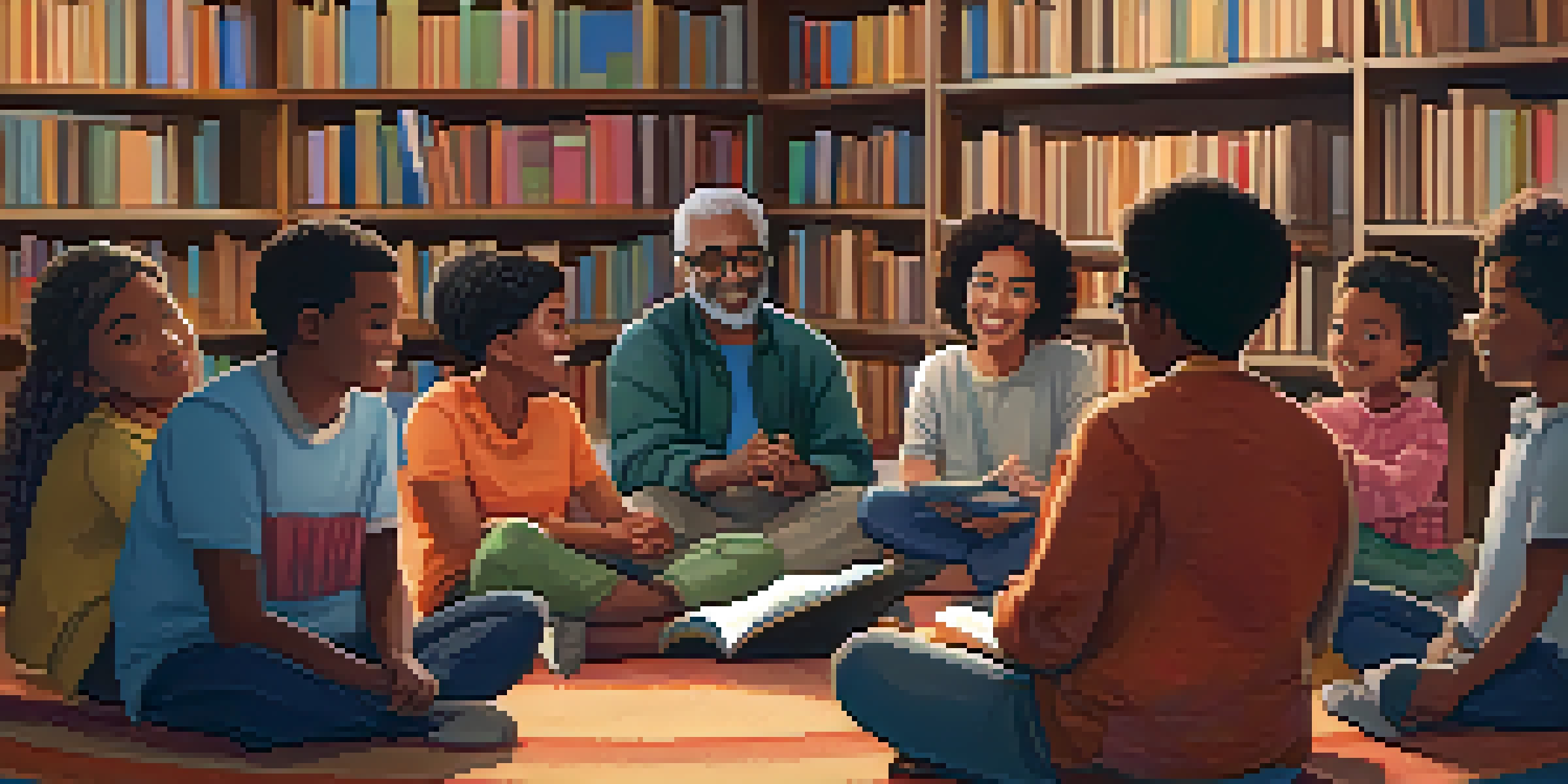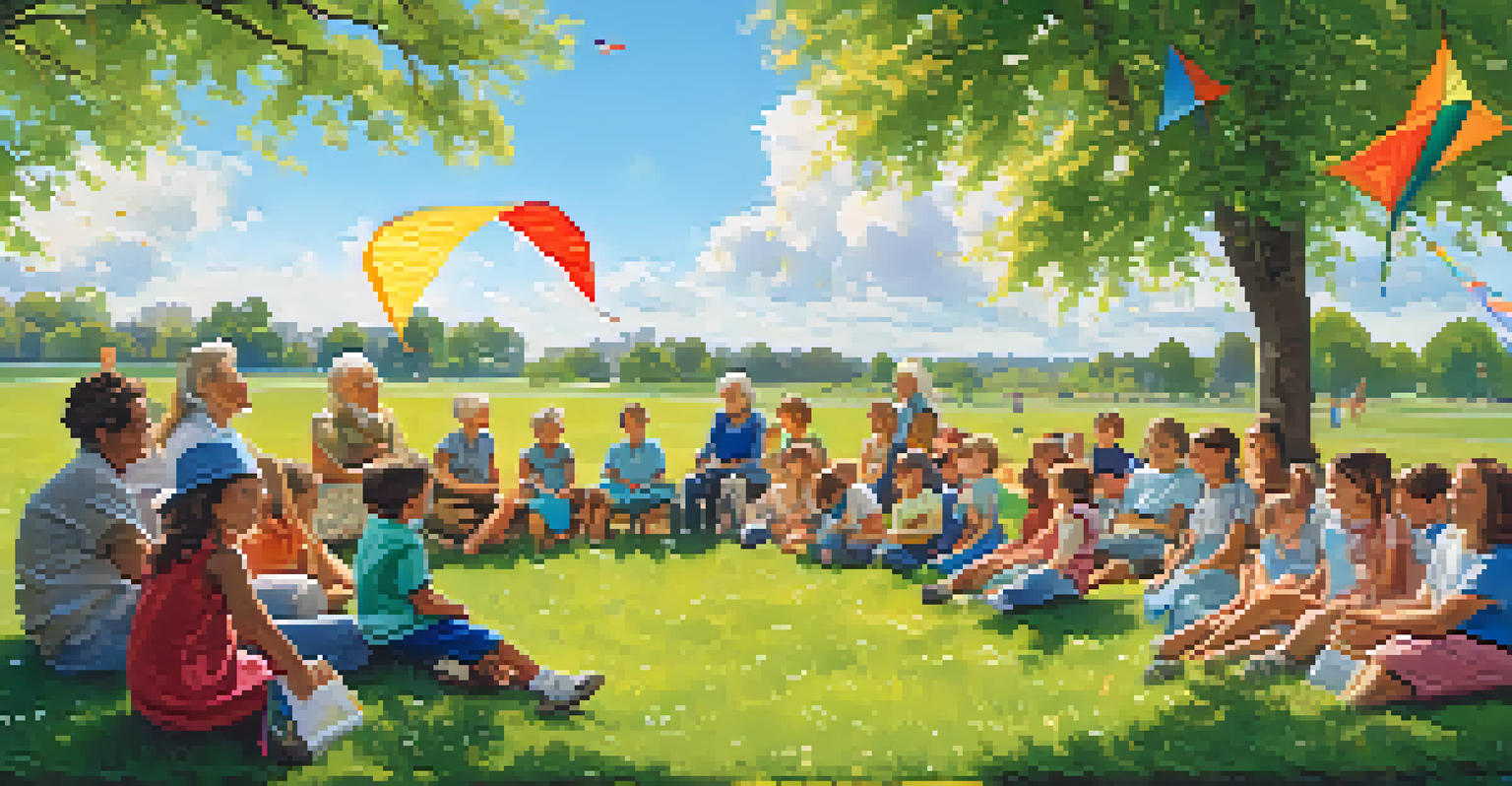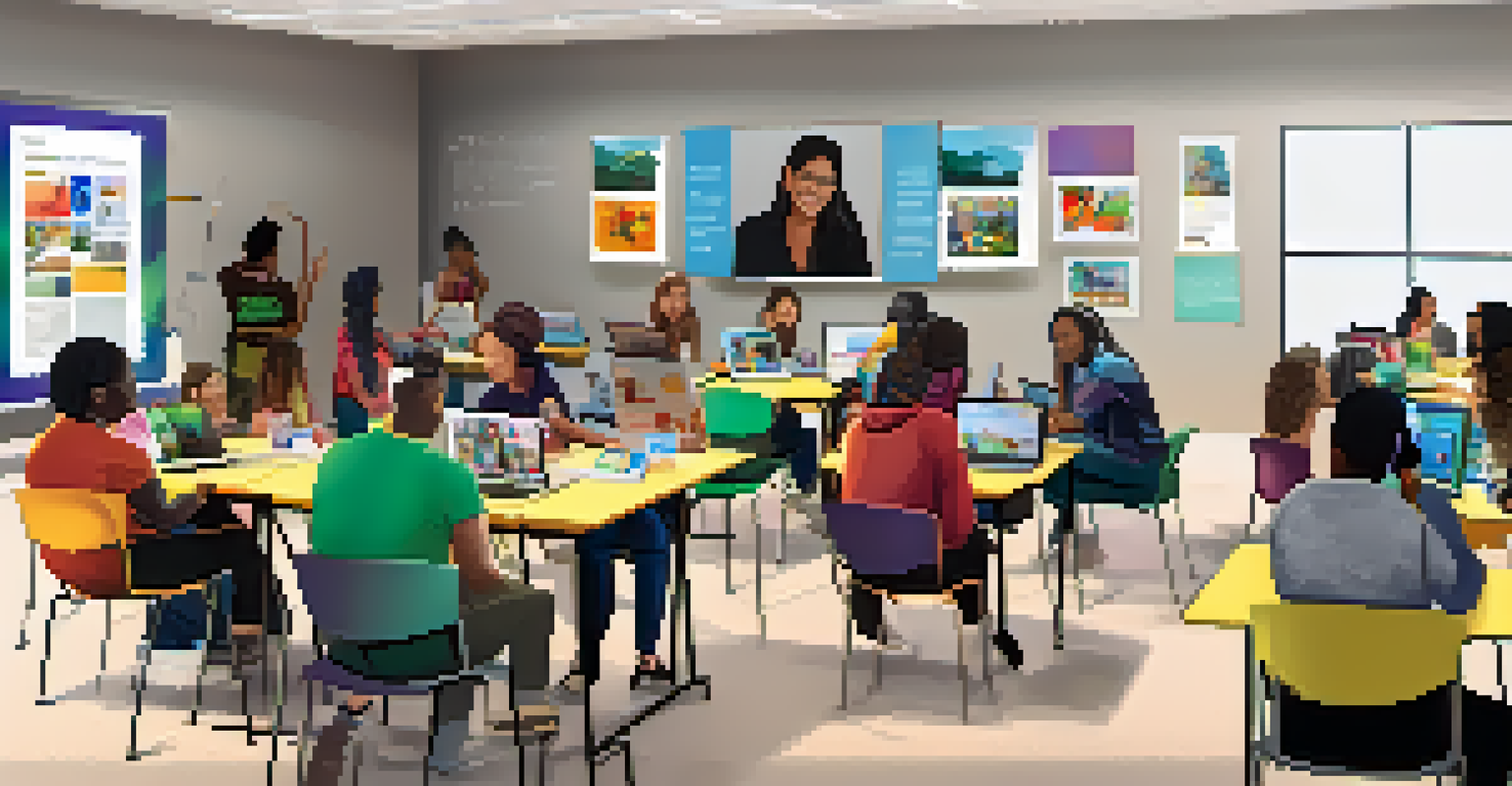Creating Connection: The Impact of Storytelling in Communities

Understanding the Essence of Storytelling in Communities
Storytelling is more than just sharing tales; it's a fundamental way for people to connect. It creates a shared experience that fosters empathy and understanding among community members. When we hear a story, we often see reflections of our own lives, which helps break down barriers.
Storytelling is the most powerful way to put ideas into the world today.
In many cultures, storytelling has been a tradition passed down through generations. This practice not only preserves history but also creates a strong sense of identity within the community. As stories are shared, they weave a rich tapestry of shared experiences that bind individuals together.
Ultimately, storytelling is a powerful tool that can unite diverse groups. It invites participation and encourages individuals to contribute their unique narratives, enriching the community's overall fabric.
The Role of Stories in Building Trust and Relationships
Trust is the cornerstone of any strong community, and storytelling plays a crucial role in building it. When individuals share their stories, they reveal vulnerabilities, creating an environment of openness and honesty. This openness fosters deeper relationships and encourages others to share their experiences.

For example, community events that feature storytelling can create a safe space for dialogue. Participants often feel more connected when they hear relatable stories, leading to a stronger sense of belonging. This shared experience can transform strangers into friends and allies.
Storytelling Builds Community Bonds
Storytelling fosters empathy and shared experiences, creating connections among community members.
Moreover, listening to each other's stories can help dispel stereotypes and misconceptions. By understanding different perspectives, community members can cultivate compassion and respect, which are essential for maintaining harmony.
How Storytelling Can Drive Social Change
Storytelling has the power to inspire action and drive social change. When stories highlight injustices or challenges, they can mobilize communities to respond. A compelling narrative can ignite passion, encouraging individuals to participate in initiatives aimed at improving their surroundings.
Stories are a communal currency of humanity.
For instance, storytelling campaigns have been used to raise awareness about issues like climate change or social inequality. By sharing personal experiences, activists can humanize these topics, making them more relatable and urgent to wider audiences. This emotional connection often leads to increased engagement.
Additionally, storytelling can serve as a call to action. When people resonate with a story, they are more likely to contribute their time, resources, or skills to support a cause. This collective effort can lead to significant positive changes within the community.
The Impact of Digital Storytelling on Community Engagement
In today's digital age, storytelling has evolved with technology, making it more accessible than ever. Through social media, podcasts, and blogs, individuals can share their stories with a global audience. This shift has allowed communities to connect beyond geographical boundaries.
Digital storytelling empowers marginalized voices that may otherwise go unheard. Platforms like YouTube and Instagram provide spaces for sharing personal narratives that challenge mainstream narratives. This democratization of storytelling fosters inclusivity and encourages diverse perspectives.
Trust Grows Through Shared Narratives
When individuals share personal stories, it cultivates openness and deeper relationships within the community.
Moreover, online storytelling can galvanize community members around common interests or causes. Virtual events, such as webinars or live storytelling sessions, enable people to unite and collaborate, strengthening their community bonds in the process.
Creating Safe Spaces for Storytelling in Communities
For storytelling to flourish, communities must create safe and welcoming spaces. These environments encourage open dialogue and enable individuals to share their experiences without fear of judgment. Workshops, support groups, and community centers can serve as hubs for this kind of engagement.
An example of this can be seen in local libraries or community organizations that host storytelling nights. Such events provide a platform for individuals to express themselves while also building connections with others. It’s an opportunity to celebrate diversity and learn from each other’s journeys.
Safety in storytelling is also about being mindful of the content shared. Encouraging respect and sensitivity ensures that all voices are honored, making it easier for individuals to open up. This nurturing environment is essential for sustaining a vibrant storytelling culture.
The Therapeutic Benefits of Storytelling in Communities
Storytelling can also have profound therapeutic effects on individuals within a community. Sharing personal narratives can be a form of catharsis, helping individuals process their emotions and experiences. This act of storytelling can lead to healing and personal growth.
For example, grief support groups often use storytelling as a way for members to express their feelings and find solace in shared experiences. By articulating their stories, individuals can better understand their emotions and feel less isolated in their struggles.
Digital Platforms Amplify Voices
Digital storytelling allows marginalized voices to be heard, fostering inclusivity and diverse perspectives.
Furthermore, storytelling can promote mental well-being by fostering a sense of belonging. When individuals feel connected through shared narratives, it can reduce feelings of loneliness and anxiety, ultimately enhancing their overall quality of life.
Encouraging Intergenerational Storytelling in Communities
Intergenerational storytelling bridges the gap between different age groups within a community. It allows older generations to share their wisdom and experiences while younger members can offer fresh perspectives. This exchange enriches the community and strengthens bonds across age divides.
For instance, programs that pair youth with seniors for storytelling sessions can cultivate mutual respect and understanding. The younger generation gains valuable insights from the lived experiences of their elders, while seniors feel a renewed sense of purpose and connection to the youth.

Moreover, this practice helps preserve cultural traditions and histories. By passing down stories from one generation to the next, communities can maintain their unique identities and values, ensuring that important lessons are not lost over time.